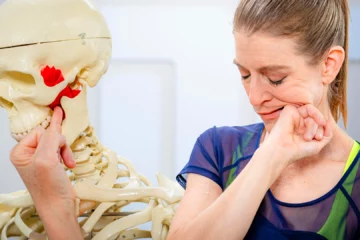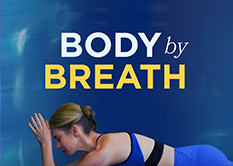
If you’re anything like me, you’re searching for that special someone that you can connect with on a physical, emotional and spiritual level. You know, that perfect combination of a real head turner, who also helps you feel safe, relaxed, and in love with life? Look no further! Please meet (cue the drumroll)….your scalenes! Ok, while the scalenes might not be the hottest Friday night date, they are interesting and important muscles that are intimately involved in all layers of life, from the overt to the subtle.

The scalenes (there are three: anterior, middle, and posterior) originate at the side of the cervical vertebrae, journey beneath the clavicle, and attach to the first and second ribs. When one side contracts, it laterally flexes and rotates the head and neck to the opposite side (see, I promised you a “head turner!”); contracting both sides simultaneously elevates the ribs and flexes the neck. Rib movement isn’t the only way in which the scalenes affect the breath – the phrenic nerve, which lies beneath the scalenes, is the main nerve of the diaphragm. Supple scalenes are imperative for a full breath because of this relationship and are capable of both energizing and relaxing us.
An even further reaching nerve affected by the tonality of the scalenes is the vagus nerve. The vagus nerve is one of the longest nerves in our bodies (almost the size of the spinal cord!) and talks to the thyroid, adrenals, intestines, pancreas, gall bladder, heart, and brain. In fact, 80% of the nerve is afferent, meaning it carries information from the viscera to the brain. This communication from gut to brain is the physiological explanation of “gut instinct” and why the vagus nerve is considered connected to intuition in “subtle anatomy.” The vagus nerve is the most important part of the parasympathetic nervous system and stimulating it will counteract the “fight or flight” response. The activation of this nerve releases an array of anti-stress enzymes and hormones such as acetylcholine, vasopressin, and oxytocin. Thankfully, to stimulate the vagus nerve you only need to do some full diaphragmatic breathing, which also helps to relax jaw and scalene muscle tension, further freeing up the vagus nerve and reducing tension overall. It’s a win win situation!
In her Anatomy of Yoga seminar Ellen Heed, master bodyworker and anatomy teacher, explores the layers of anatomy from the gross to the subtle and the emotional component of what she calls the Primary Structural Muscles. The “emotional body mapping” (emotions associated with a particular muscle) came from her extensive clinical experience/observation, dialoguing with clients to find common themes, and her advanced studies with Dr. Vincent Medici at the Shiatsu Massage School of Santa Monica. The emotion associated with the scalenes centers around erotic embodiment and whether we give ourselves permission in the realm of the erotic. Though often used as synonymous with sexuality, eroticism is more broadly defined by Ellen as eros, or the love of life. Opening to the love of life is the most fundamental element in our ability to live freely and joyfully; therefore a healthy tone in the scalenes is important on a physical, emotional, and spiritual level.
Sounds like a match made in heaven, right? Unfortunately, the pace and habits of much of modern life cause a chronic tightness and irritation of the scalenes. Chronic stress will tighten the jaw and scalenes, and our stress induced breath patterns only further irritate the tissues. Additionally, hours spent at computers and looking down at cell phones (cervical flexion) create an adaptive shortening of the scalenes. Not to worry though, your relationship is not doomed, you just need a little Yoga Tune Up therapy. Come back on Friday for my follow up blog “Scalenes: from pain in the neck, to breath and bliss,” and learn ways to show your scalenes some love!
Enjoyed this article? Read Scalenes On The Scale: Taking The Measure Of Three Small Muscles












As a physician assistant I look for inappropriate use of the scalenes when someone inhales to alert that they are having breathing difficulties. It may be an acute or chronic problem, but this an important sign to watch for. It’s all about the breath. Even the military teaches yogic breathing exercises for reducing stress and for tactical use. I am very encouraged to see so many different types of therapies attentive to the breath.
Yoga teacher David Vendetti (South Boston YogaJ once mentioned in a rolling class that the scalenes are the psoas of the upper body, a primary flexor deeply connected to breath and the vagus nerve. And both are chronically tight on me! Flexion is literally about forward motion, and an indicator of how results-driven our culture is, in addition to the physical postures of sitting and typing. Makes me very grateful for YTU and rolling.
I totally didn’t think about shortening in the scalenes from cervical flexion. Thanks for pointing that out. And interesting take on eroticism as love of life. Haven’t heard of that before.
The ability to manipulate the vagus nerve through diaphragmatic breathing is a profound tool of stress relief. Your article emphasizes the importance of relaxing the neck muscles while breathing. The association between the scalenes and emotions will reminds me to relax, breath and invite love into my whole being.
Thank you for the insight! I am extremely curious to learn more about how the muscles are connected to emotions. I am about to start digging into some reading to further my knowledge.
I have recently become very interested in the affects of stress on the body and this article found me at the right time, the connection between the muscles, nerves and emotions is much closer than I thought – love this post, this blog and how it drives me to continue to learn more to better myself. Thank you!
I am very interested in the connection between muscles and emotions, I had no idea the scaliness related to our nervous system so closely. I am going to explore this more in my body!
wow, I never thought about the eros connection of the scalenes. I have worked hard over the last few years to relax and enjoy life better but have found my scalenes to be resistant and inhibitory. Knowing the connection to the breath made sense, but now the whole bigger picture has been illuminated. thank you!
Very interesting read! Ive always enjoyed Scalene massages! This explains my, “pain in the neck to breathe and bliss!” Cant wait to read more of your blogs. Thanks for sharing!
This article speaks directly to me this week, as my theme in my yoga classes is understanding your viscera, “gut instinct” and how the vagus nerve is the link from viscera to brain. Thank you for sharing!!!
I knew it was important to release tension in the scaliness and some of the causes fo its tension, but didn’t realize it also had connection with two important nerves, the phrenic nerve and the vagus nerve! Adds some extra context to why you should bother about it’s tension.
I love the connection from the scalenes to the nerve that runs the diaphragm! Chronic tight neck equals chronic poor breathing. brilliant context for cueing. Thank you.
Thank you so much for this article. I appreciate the extensive information and the resources provided. I will definitely be saving this article to access in the near future.
Fantastic read. Love the connection to emotional mapping and the love of life. Definitely an area I want to continue to adderss personally and with students. On to read your next article 🙂
I am highly interested in “emotional body mapping” so thank you for sharing this information! I tend to strain my neck often and do suffer from TMJ so learning about these connections are very important to me. As I continue my practice, I am to treat my body more delicately and be attune to what is causing me stiffness or pain, so I can learn to relax and hopefully, witness the return in my emotional state.
It’s a very interesting article !! We live in a society where everything goes very quickly, where most people do not take the time to take care of themselves, even less of their scalenes !!! I never make the connection between these muscles and breathing, but if you pay attention carefully, you can feel it easily !! WOW !!!
“Emotional body mapping”, what a wonderfull thing to read ! I had never thought of it that way !! It reminds me of an article I read untitled “The psoas : The muscle of the soul”. I should read it again !
Thank you !!!
I found this to be a deeply informative article. I’ve been aware for sometime of the connection between stress, short breath, and my tight scalenes, but this really enlightened the specific relationship between the scalenes and the nervous system for me. I also appreciate the mention of the work of Ellen Heed, and you’ve inspired me to read more about her work as well!
So interesting! I’ve been experiencing headaches and neck pain/instability. Makes me think that these muscles are probably in play. I also had no clue that they played a role in the breathing…. disfunctionnal breathing could totally lead to headaches. I’ll have to invertigate this!
This was such a great reminder of the scalenes and how important they are when it comes to the overall breath. As so many others out there, I often carry so much tension in my neck. I just followed along to the sample video and I found immediate relief. This was a great read and the video is a great tool to apply when you’re having a stressful day at work or generally to counter all the cervical flexion we experience in our daily modern life as you mentioned.
Very informative explanation. I had no idea about the importance of supple scalenes and a full breath. I am intrigued about the relationship. Additionally, as a long time sufferer of TMJ and general jaw tension i am intrigued as to the
possible relationship between my discomfort and the scalenes. Looking forward to the next post!
Post surgery i have patient with vagus nerve “malaise” this Is a “lien” with the scalenes? Sxuce m’y english
Thank you for your article! Je suis tombée dessus très très tard après avoir terminé le premier devoir de ma formation en YTU 1, les muscles du cou attaqués par le stress d’une trop longue soirée passée devant mon ordinateur. Merci pour les conseils et à Jill Miller pour le “quick fix”!
Merci!!
Thank you for sharing your personal connections, stories, and insights everyone. I love it!
That was a fabulous article! First it inspires me to know more about other muscle’s “emotional body mapping” and then of course, I reflect on my own scalene experiences. Interestingly enough, when I was going through bodywork school, my scalenes were not only tight, but super sensitive. And that was a time when I was transitioning out of a very dark period in my life (lots of substance abuse and self-loathing). Now, my scalenes aren’t as wound up or painful, and it may be from both a combination of the YTU practice that I have and the journey of learning to love myself more. I totally relate! Thanks for that!
I have become familiar with my scalenes “up close and personal” last year, after my shoulder surgery. With limited movement, my neck got limited as well and my scalenes got very tight mostly for compensating for my limited movement in my right shoulder. Great article and we definitely need to put some TLC to these head turners!!
I didn’t realize there are three individual scalene muscles! Cool! The description of how the scalenes interact with the phrenic nerve, the ribs and therefore the breath is great! I found that brief paragraph deepened my knowledge of and appreciation for these small and powerful muscles immensely.